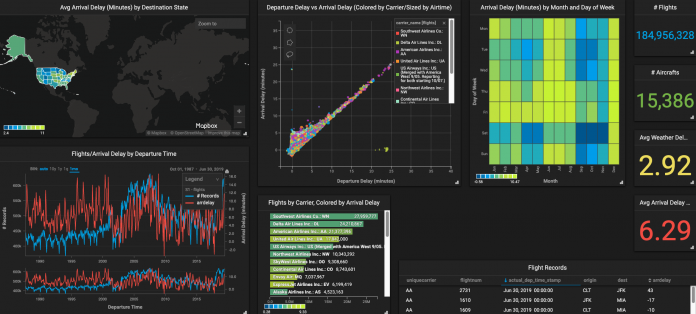The good news is that there is a wider variety of more advanced business intelligence tools available on the market than ever before. The challenge for enterprises today isn’t finding tools with advanced capabilities and specifications; it’s more so finding the tool best equipped to meet their company’s needs.
Knowing what to look for when evaluating BI and data analytics tools can help businesses invest in a platform well matched to their current and future needs — capable of providing a strong user experience across the board, all while meeting the company’s budgetary requirements.
Consider BI Tools’ Features & Capabilities
Perhaps the first question to ask is: What does our organization need from our BI tools? As cited in Forbes, the top tech features strategic to BI in 2020 were:
- Reporting
- Dashboards
- Data integration
- Data warehousing
- Data preparation
- Self-service for end users
- Advanced data visualizations
Central to choosing the right business intelligence tools is understanding what features are available today and then matching them to the most anticipated use cases for your company — now and in the future.
Consider the User Experience of BI Tools
One ongoing challenge in the world of BI is getting users to consistently utilize the tools made available to them, as measured by adoption rates. Low adoption can indicate issues with accessibility of tools or poor user experience even if employees are able to access them.
Thus, getting the most from your investment in BI and data analytics requires driving adoption by optimizing this user experience. Start by assessing your user base. How much experience does the “average” user have with BI tools? What business goals are they trying to fulfill? Self-service BI specifically aims to empower the business users rather than requiring intervention from experts specialized data roles, meaning they tend to favor clarity, simplicity, transparency and intuitive use rather than more complex interfaces of years past. Querying data should be no more difficult than entering a phrase or question into your average search engine — if you actually expect people to routinely use these tools for everyday decision-making purposes, that is.
Another way to help maximize the usefulness of whichever BI technology your enterprise chooses is to provide targeted data literacy training aimed at helping users fully understand how to work the tools and how to interpret the outcomes they receive. Meeting users where they currently stand in terms of tools and training goes a long way toward uplifting companywide adoption.
Consider the Cost of BI Tools
Last — but certainly not least in terms of importance — the price tag of given business intelligence solutions must be considered. There are a few different category of costs to think about when evaluating different options. Here’s how Tech Report outlines them:
- Implementation expense: This is the initial price tag enterprises pay to buy BI software and associated licensing costs. These costs should be explicit from the get-go.
- Soft costs: Harder to calculate up front, these costs include the cost of getting the system up and running, as well as the cost of training users to be able to use it effectively.
- Scaling expenses: Some tools cost the same regardless of the size of the user base; others include per-user fees or require upgrades to increase their reach over time if your company’s user base grows. Looking ahead to these costs will help you choose a tool that can suit your budget not just during the initial purchase, but for months or years to come.
Doing your due diligence while evaluating business intelligence tools will help you choose the right fit in terms of usability, features and price.










